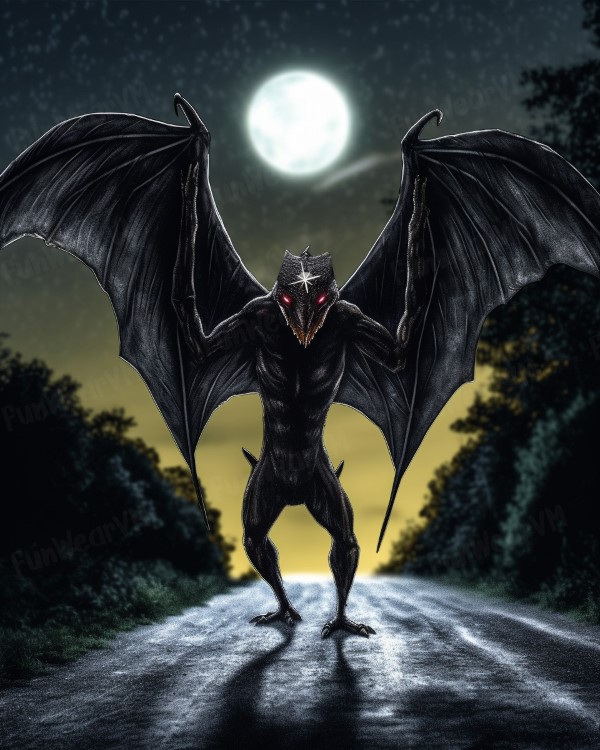
For five nights, a strange creature with bat-like wings, a horn on its forehead, and a foul smell haunted the town, leaving behind footprints, plaster casts, and terrified witnesses.
The Van Meter Visitor was first sighted on September 29th, 1903, by Ulysses Griffith, a local doctor. He was awakened by a bright light shining into his bedroom window. He grabbed his shotgun and went outside to investigate. He saw a large creature perched on a telephone pole, emitting a beam of light from its horn. He fired at it, but it seemed unaffected and flew away.
The next night, another witness, O.V. White, a hardware store owner, had a similar encounter. He heard a noise outside his store and saw the same creature on the roof. He also shot at it, but it flew away with a loud screech. The following night, Sidney Gregg, a banker, was returning home from work when he saw the creature in an alley. It jumped on him and knocked him down. He described it as having smooth skin, large eyes, and a blunt nose. He managed to escape and ran to his house.
On October 2nd, several townspeople decided to track down the creature and put an end to its reign of terror. They followed it to an old coal mine on the outskirts of town. There they discovered not one, but two of the creatures. One was larger than the other and seemed to be guarding it. The townspeople opened fire on them, but they retreated into the mine shaft.
The next morning, the townspeople gathered at the mine entrance, expecting to see the creatures emerge. But they never did. The mine was sealed off and the Van Meter Visitor was never seen again.
What was the Van Meter Visitor? Was it a hoax, a hallucination, or a genuine cryptid? No one knows for sure. Some have speculated that it was a misidentified bird, bat, or pterosaur. Others have suggested that it was an alien or an interdimensional being. Some have even claimed that it was a manifestation of collective fear or subconscious guilt.
Whatever it was, the Van Meter Visitor has become a legend in Iowa folklore and cryptozoology. It has inspired books, documentaries, podcasts, and festivals. It has also sparked curiosity and imagination among those who wonder what else might be lurking in the dark.
References:
